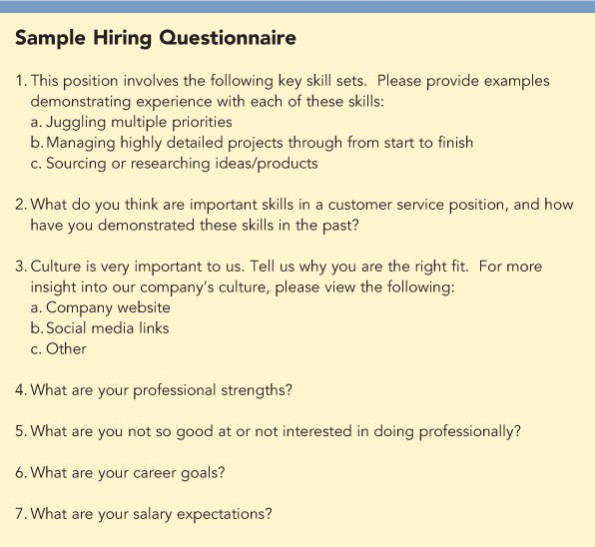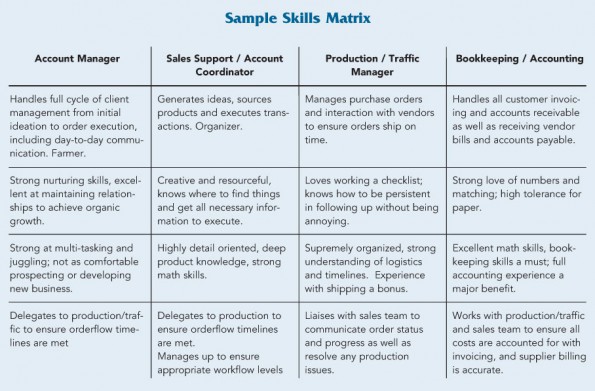Building Blocks
How To Hire When You’re Growing Your Business
One of the most challenging things about being an entrepreneur is knowing how to grow your business; specifically, when to pull the trigger on adding people to your team and how to do it.
There is the risk that comes with adding payroll costs when you don’t know if the revenue the individuals bring in will cover their compensation, along with the fear of having to let someone go if things don’t work out.
When building out a distributor business, there are some natural points in time when adding staff makes sense:
• When you have more opportunities than you can handle
• When you need to free yourself up from administration to build sales
Hiring Support Roles
Three roles can help solve administrative burdens and workload problems:
• An account coordinator who can help with sourcing, quoting and liaising with existing clients, so you can focus on building relationships and bringing in new business
• A production coordinator who can manage all general administration needs, as well as all supplier touch points after purchase orders are created, to make sure production goes smoothly
• A bookkeeping/accounting person who can handle all customer invoicing and accounts receivable as well as receiving vendor bills and accounts payable
These roles quickly pay for themselves if you are able to leverage the time for you or your team to be able to sell more. Do some simple math: if one of these roles costs approximately $50,000 including benefits, vacation etc., then all you need to bring in is an additional $10,000 per month in sales. By hiring for any of these roles, you should easily be able to free up enough time to achieve that.
Building And Scaling A Sales Team
Now that you have a good model going—customers who buy what you’re selling and a brand with purpose—it’s time to scale the sales team.
There are two approaches you can take to achieve this:
• Farmer Model When the account coordinator you have hired has been in the role for a year or two, promote that person to account manager where he or she can manage a portfolio of clients. This allows you to remove from your portfolio some of the smaller accounts that have potential but which you don’t have time to groom. This frees you up to bring in more opportunities, and it results in solid organic growth from the existing client base.
• Hunter Model If what you need is more sales quickly, and you don’t have the patience to grow in a more organic fashion, you can bring in a “hunter” whose responsibility it is to bring in new business. This is a very different skillset from a “farmer,” so be sure you are looking for the right skills.
Hiring a hunter in the promotional industry is difficult. Hiring from another distributor rarely works, as the new person comes in with baggage from another distributor who runs their business differently. If the other distributor has done a good job of building their brand, their clients should want to stay with that brand, not follow the individual salesperson to a new company. If someone promises to bring a book of business to you, you should be skeptical about the success of retaining all of that revenue. It also sets up the potential that the new salesperson will do the same thing to you one day—leave and take their customers with them.
To gain a better understanding of how these new roles will fit into your business and what they will be responsible for, check out the sample skills matrix below.
Mastering The Hiring Process
Hiring sounds easy, so why is it so hard to find the right person? Hiring failure usually happens as a result of one of three things:
1. The wrong job description
2. The wrong interviewing techniques
3. The wrong onboarding process
So let’s talk about how to get these things right so you can avoid these potential pitfalls.
1. The Job Description
When crafting a job description, be clear on what skills the person needs to be successful. Identify what skills are non-negotiable and what are things you can teach with the right attitude.
The biggest mistake we see is people describing roles too generally. If the job description is too broad, then the specific skills the person needs to be successful will not be as clear. For example, if you are hiring for a production and administration role, the person needs to thrive off of working a checklist and derive satisfaction from finishing tasks. People in these roles don’t mind working in an environment where their interaction is primarily virtual, so be sure not to hire a major extrovert who gets his energy from face-to-face interaction like a salesperson would. Craft the description to attract the right kind of person.
Remember, a job description is also a sales pitch for why a candidate would want to work for you, so be sure to include information on why your company is a great place to work.
2. The Interview
Before you decide whether to interview a candidate, save yourself some time by doing an initial assessment to determine if he or she will be worth interviewing. There are great tools you can use such as ClearFit, which uses a questionnaire to score the candidate’s appropriateness for the role. Another idea is to create a simple questionnaire yourself and send it to candidates. (See sample below.)
Once you have narrowed down the pool and made sure you are bringing in the right candidates, prepare the right questions in advance. The reason why many interviews fail to assess whether the person is right for the job is because the interviewer asks rote, predictable questions for which the interviewee is prepared. In addition, they are often asked questions that don’t really address the skills the person will need for the job.
If you’re hiring a salesperson, be sure to include in the interview process an opportunity for the person to sell you something. If you are interviewing candidates for an administrative role, ask for examples of how they have maintained order in chaos in previous roles or demonstrated resourcefulness. After the candidate has given you one example, ask for another so you can get beyond a pat answer.
3. The Onboarding Process
You’ve successfully hired the right person and now it’s time for onboarding. Too many small businesses throw new employees into the fire and assume they will just learn on the job. Not only does this not set the person up for success, but it creates the risk that they will leave. New employees make a decision in the first six weeks as to whether they are going to stay with a company, so the initial time period is critical to ensuring they want to stay.
No matter how small your company is, set up a formal training schedule for the first week of employment. Create a manual they can refer to, even if that manual is only a page or two. It helps document processes and gets you thinking about how to transfer knowledge that is in your head to the new employee. Check in regularly with the new hire to see how the person is doing and identify and fill in gaps your training may have missed.
Catherine Graham is the CEO and co-founder of commonsku and president of Toronto, Ontario-based distributor RIGHTSLEEVE. She can simultaneously compute complex Excel formulas in her mind and protect her goaltender from an odd-man rush.



